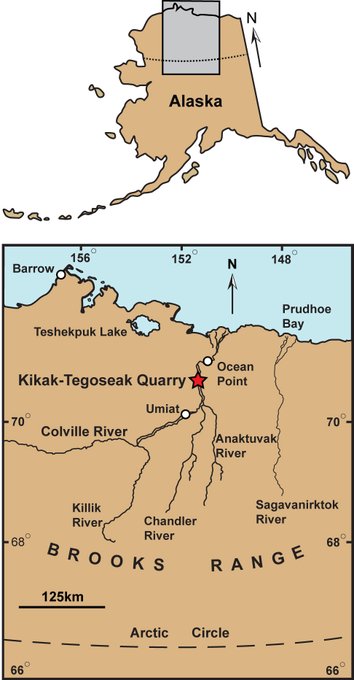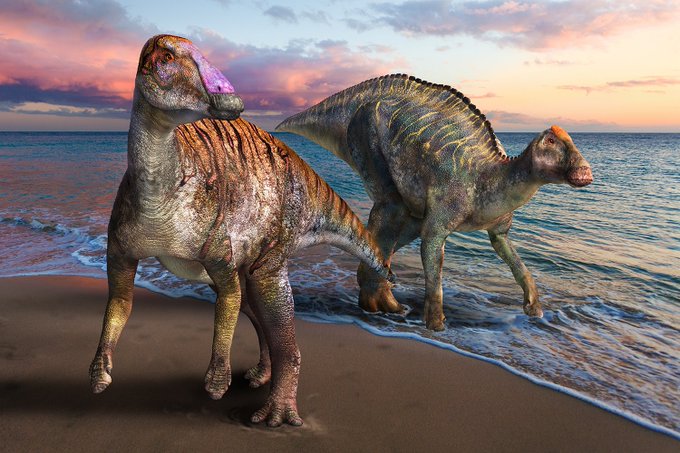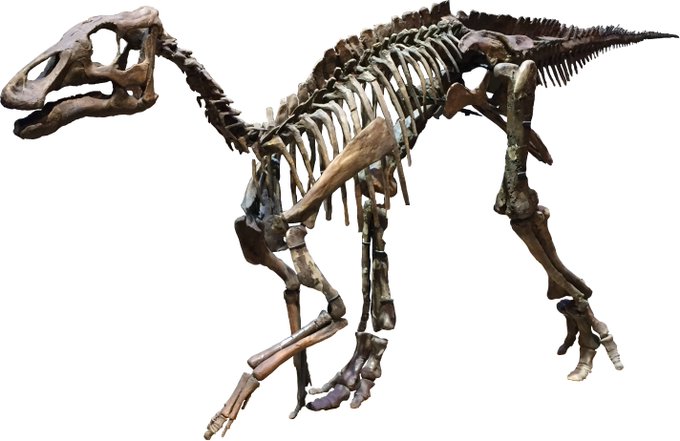as part of week long @Biogeography celebration of #HumboldtDay #FossilFriday today is look back to pygmy Arctic tyrannosaur Nanuqsaurus from Cretaceous of Alaska (see Fiorillo & Tykoski 2014, PLOS ONE). #DYK limited seasonal resources may have produced dwarfism in this dino?
New hadrosaur Yamatosaurus izanagii from Japan (Kobayashi et al 2021 https://t.co/9PsD3vGvnM). Hadrosaurs remarkably diverse and abundant, but one thing Yamatosaurus tells us is that group likely originated in Eurasia and used ancient Beringia to move into western No Am.
#FossilFriday #Alaskadinosaurs The most common hadrosaur from Arctic, Edmontosaurus from North Slope Alaska. Closely related Kamuysaurus from Hokkaido (Kobayashi et al 2019). These dinos support land bridge model btwn Asia and No Am. More on Japanese hadrosaurs and biogeog soon!
#DYK @DenaliNPS, home to the tallest mtn in No Am and lower Cantwell Fm (Cret), a rock unit that contains an incredible record of dinosaurs. Sed environments for Cantwell include alluvial fans and braided streams. A reasonable modern analog can be seen in western Brooks Range.
@DenaliNPS tracksite hit the news wire in a big way in 2014 (CNN just one example). Perot paleo led to two public exhibits, the hadrosaur families in mural on display at Murie Science and Learning Center (mural by Karen Carr), and interactive #ichnology exhibit @PerotMuseum



















